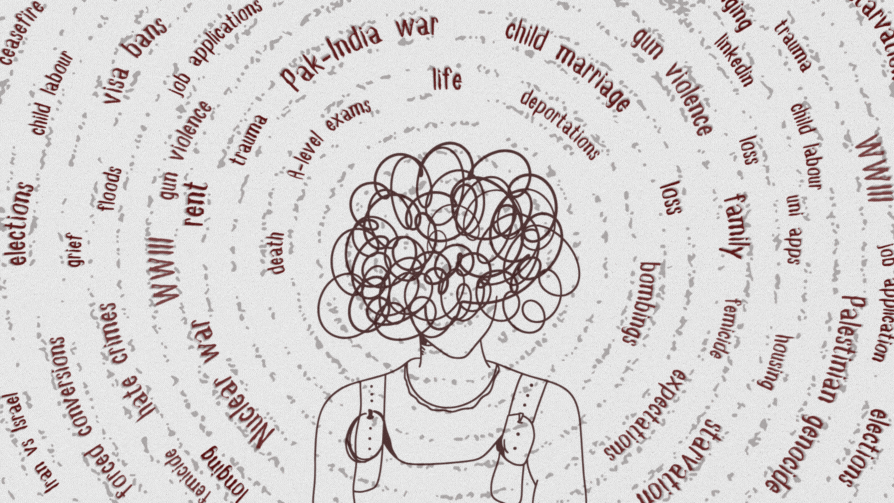Kathak is a confluence of Hindu and Muslim cultures, says Farah Yasmeen Shaikh
“Playing for such a consummate performer, was an electrifying experience,” enthused percussionist Yousuf Kerai, as he referred to the California-based, US-born, exponent of Kathak, Farah Yasmeen Shaikh, at the end of a memorable session at the PACC (Pakistan American Cultural Center) in Karachi on April 4.
I had earlier met Farah (if I may be allowed to use her first name) at a common friend’s house. She was as generous with her disarming smile as her audience was that evening with the applause that punctuated each segment of her performance.
A disciple of Pandit Chitresh Das, who belonged to the Lucknow gharana of Kathak, Farah paused for a while when this writer asked her “Do you think it makes sense to follow one gharana and not borrow the strong points of another gharana?”
“The answer is ‘yes’ and ‘no’. One can borrow the nuances of another gharana so long as it does not result in a fusion of two styles. Let’s examine this in culinary context. You may add a spice or two to an Italian dish but not in so much quantity that the dish would lose its flavour entirely,” came the reply.
There wasn’t anyone in her family who was into any genre of dance, but in her school at Salinas (known for being the town of John Steinbeck) in California she was enrolled in dance class when she was merely five but that was confined to Western dance. Her parents were very much into North Indian classical and semi-classical music, as also into qawwali. She went with them to concerts of both US-based and visiting musicians and over the years developed a taste for our music, both vocal and instrumental.

When she was studying at San Francisco State University, she happened to meet Pandit Chitresh Das, who was teaching Kathak in the same institution. Captivated by the dance and the performer she decided to enrol as his student. She was at that time 18 and since then she has been whole-heartedly into what has been her favourite dance form. Two years later, in 1998 to be precise, she joined the Chitrish Das Dance Company and in 2000 she decided to perform and teach Kathak on a full-time basis.
“Why Kathak, why not any other discipline such as Odissi, Kathakali, Manipuri or Bharat Natyam?” was my next question. “It’s simply because it is a confluence of Hindu and Muslim cultures and the music accompanying Kathak is the one I have been familiar with since my childhood,” replied Farah, only to add “But I do love not just other dance forms from the subcontinent but also Chinese, Mexican and Spanish dances, to name a few.”
"One can borrow the nuances of another gharana so long as it does not result in a fusion of two styles. Let’s examine this in culinary context. You may add a spice or two to an Italian dish but not in so much quantity that the dish would lose its flavour entirely."
She visited Pakistan as a child in the eighties, but earlier this year she was here to perform and conduct workshops, not just in Karachi but also in Lahore. Habib University sponsored her current visit, where she once again conducted workshops. This time she performed at T2F and at the PACC, where the audience included a Chinese cultural delegation, which was, luckily for its members, in Karachi that evening. The fact that the Chinese warmly applauded the dancer and the accompanying musicians proves that music and dance cut across all linguistic and national boundaries.
Called Milaap, the programme was jointly sponsored by the PACC and the Tarz Group, headed by the talented tabla player Yousuf Kerai, who teaches Calculus and Mathematics at Habib University. Two of the segments, based on Raga Aiman and Raga Nat Bhairav, also feature on the Group’s newly released CD, The Essence of South Asia. A surprise item was the vocal rendition of the vintage film song 'Payal mein geet hain cham cham ke' by Ustad Mehmood Ali Khan, and Farah who gave a visual interpretation to the semi-classical ditty, disclosed that the singer Iqbal Bano has been her family’s favourite singer.

A point which merits special mention is that Farah’s facial expressions, ranging from happiness to dismay and surprise to shock, were just as eloquent as the fluid movements of her limbs.
The standing ovation that Farah and her accompanying musicians got in conclusion was, to use one word, exhilarating.
Seasoned choreographer Sheema Kermani, who was requested by the organisers to hand over the bouquet to the younger dancer, said, "Farah is a lovely dancer. I admire her commitment… I must thank her for conducting a workshop for my students."
Also read: I think Muslim men see my dancing as a challenge to them, says Sheema Kermani
“Yes, I shall come again soon. I will also be looking forward to watching such accomplished dancers as Sheema, Nahid Siddiqui and Nighat Chowdhry live. I have so far seen only their videos,” Farah Yasmeen Shaikh, told a young admirer, as she rushed to the green room. She was in a tearing hurry because she had to catch a flight back home four hours later.














Comments